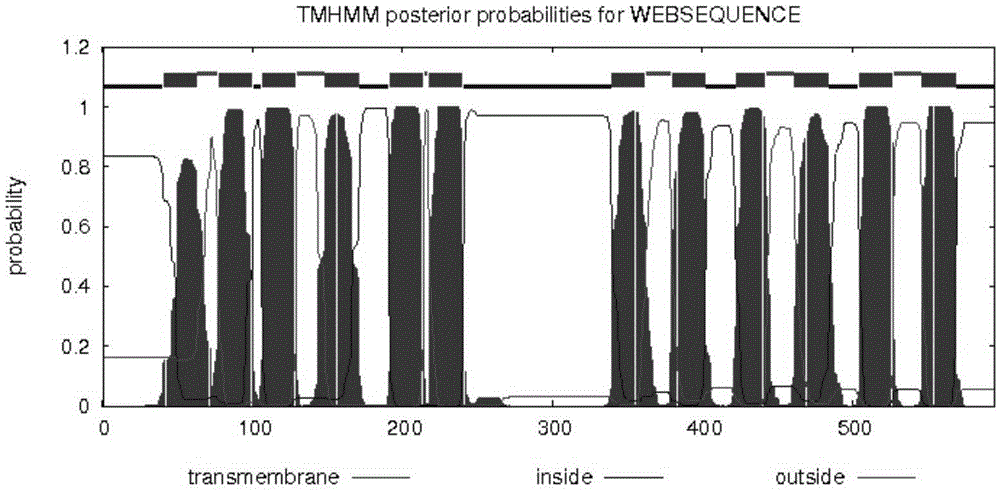Tea tree NRT1 gene, protein and gene expression method
A technology of gene expression and tea tree, applied in the field of molecular biology, can solve the problem of lack of research on the characteristics of nitrogen absorption transporter
- Summary
- Abstract
- Description
- Claims
- Application Information
AI Technical Summary
Problems solved by technology
Method used
Image
Examples
Embodiment 1
[0021] The tea tree NRT1 gene expression method, its steps include:
[0022] (1) Synthesize primer sequences NRT1F and NRT1R, wherein the sequence of NRT1F is shown in SEQ ID No. 3, and the sequence of NRT1R is shown in SEQ ID No. 4;
[0023] (2) Real-time quantitative PCR amplifies the full-length sequence of tea tree NRT1 gene, the PCR system reaction system is 25μL, of which 10×Taqplusbuffer2.5μL, 25mMMgCl 2 1.5μL, 10mM dNTP1μL, 10μM forward primer 1μL, 10μM reverse primer 1μL, template 1μL, sterilized H2O16.75μL, 5U / μL TaqplusDNApolymerase 0.25μL; PCR reaction conditions are: 94℃5min, 94℃30s, 54℃30s , 72℃60s, 30 cycles; 72℃10min; the reaction product was recovered by 1.0% agarose gel electrophoresis, the PCR amplification electrophoresis chart is shown figure 1 ;
[0024] (3) The recovered product is connected to the pMD18-T vector and transformed into E. coli DH5a;
Embodiment 2
[0026] Extract RNA from tea plant roots and leaves for real-time fluorescence quantitative RT-PCR analysis, the results are as follows figure 2 As shown, tea tree is affected by NO 3 - NRT1 expression in roots and leaves decreased significantly after treatment for 5 minutes. The expression level of roots was always lower than that of the control, increasing after 48h and reaching the highest value at 96h. After half an hour, the expression level of NRT1 in the leaves was significantly higher than that of the control, and thereafter the rule of "decrease-rise-decrease" was maintained.
[0027]
[0028]
[0029]
[0030]
PUM
 Login to View More
Login to View More Abstract
Description
Claims
Application Information
 Login to View More
Login to View More - R&D
- Intellectual Property
- Life Sciences
- Materials
- Tech Scout
- Unparalleled Data Quality
- Higher Quality Content
- 60% Fewer Hallucinations
Browse by: Latest US Patents, China's latest patents, Technical Efficacy Thesaurus, Application Domain, Technology Topic, Popular Technical Reports.
© 2025 PatSnap. All rights reserved.Legal|Privacy policy|Modern Slavery Act Transparency Statement|Sitemap|About US| Contact US: help@patsnap.com



